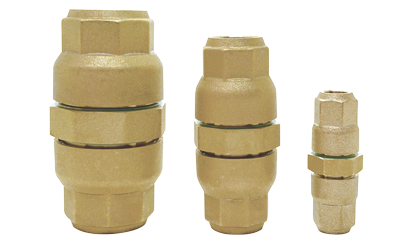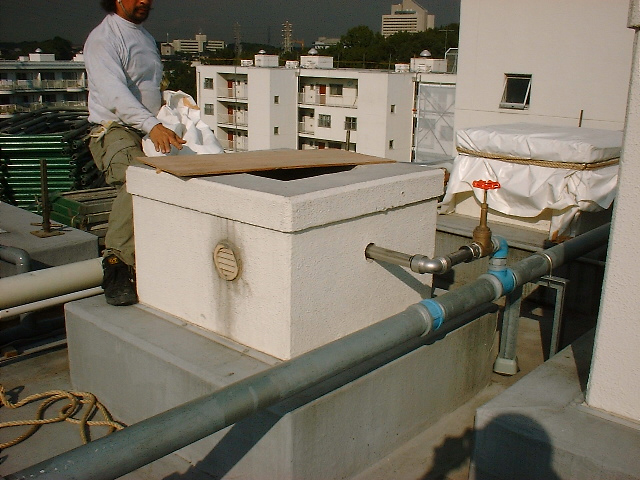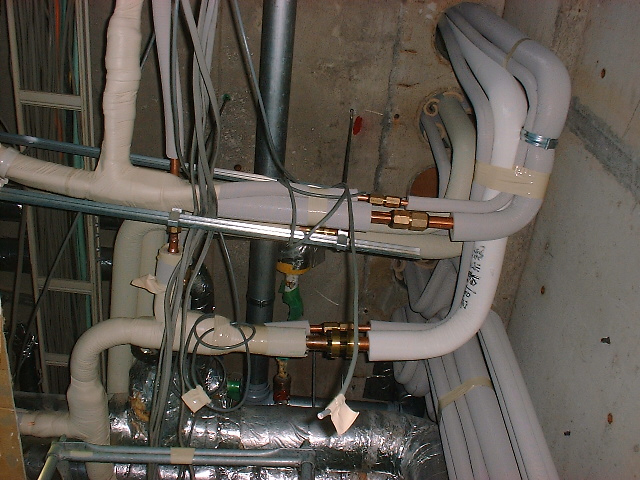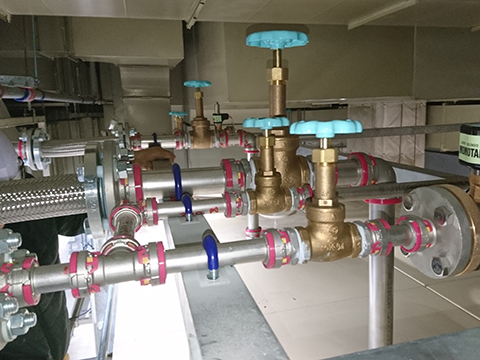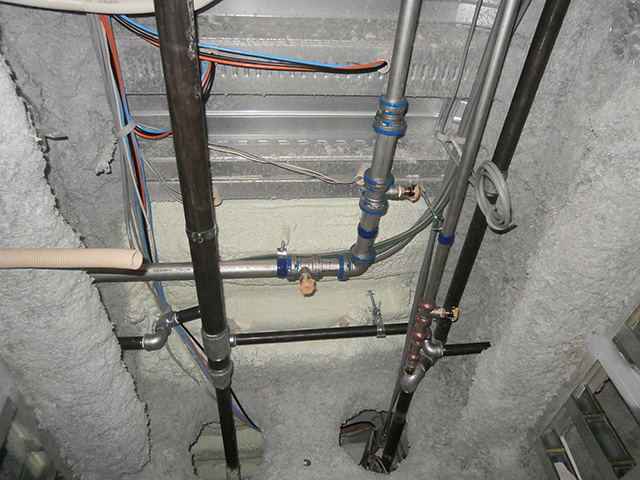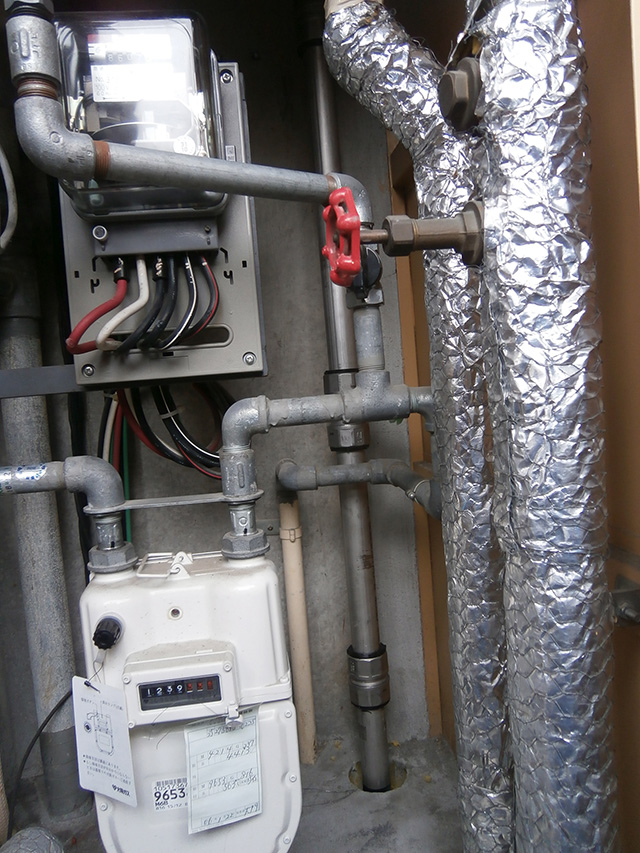TECHNOLOGY
TECHNOLOGYExplanation! What is Air Conditioning Piping?
(Refrigerant Pipe)
In the air conditioning piping for building facilities, two main types of pipes are primarily used: carbon steel pipes for piping (SGP) and copper pipes for general refrigerant piping. For drain and wastewater applications, vinyl chloride pipes are used.
SGP steel pipes are mainly used in the distribution of chilled water, cooling water, hot water, chilled and hot water, and steam, particularly in full-water systems (fan coil unit systems). These pipes are joined using threaded connections, welding, or flanges. In the centralized water system for central air conditioning, where heat source equipment is concentrated in one location, and chilled and hot water is sent to multiple fan coils installed throughout the building, SGP steel pipes (white) are commonly used. This system is typically adopted in relatively large-scale buildings.
Multi-Split Air Conditioner
In buildings with an area of generally 10,000m2 or less, the individual decentralized system has become mainstream over air and water-based systems. This system uses refrigerant, a compound of carbon and fluorine, to efficiently transfer heat by repeating the processes of evaporation and condensation between the outdoor and indoor units, making it easy to switch between cooling and heating.
This individual decentralized system is classified as building multi-split air conditioning or packaged air conditioning. Copper pipes are commonly used in this system.
Building multi-split air conditioning, also known as "building multi" or "building multi-split" is an air conditioning system where a single outdoor unit can individually operate multiple indoor units with different capacities.
For example, in hotels, this system allows each guest room to have customized operation, creating individually comfortable environments. The same applies to hospitals, where temperature settings can be adjusted for each private room, maintaining comfort and achieving high energy efficiency. This system is widely used and popular due to its energy-saving benefits.
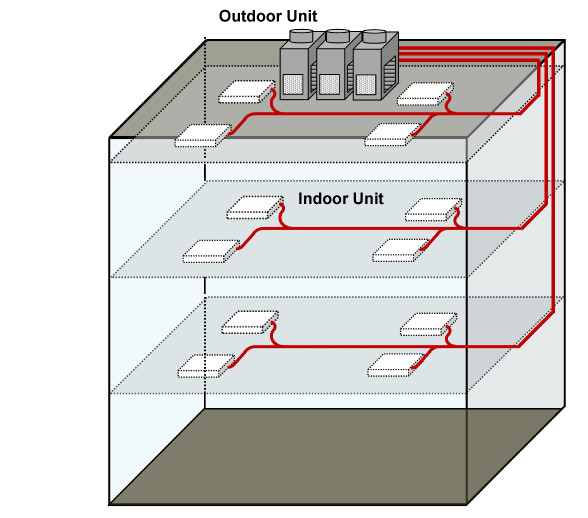
Connection of Refrigerant Copper Pipes
Refrigerant copper pipes have higher pressure requirements compared to the fan coil unit system, and the piping must comply with technical standards such as the High-Pressure Gas Safety Act and Refrigeration Safety Regulations. Additionally, special attention must be paid to the connecting process, including storage, protection, and maintaining dry, clean, and airtight conditions.
The pipes used are copper pipes (JIS H3300 C1220T standard) coated with air conditioning refrigerant insulation (JIS A9511 A-PE-C-2 compliant).
The Japan Copper Development Association (JCDA) defines the quality and testing methods of the pipes through JCDA 0009 and JCDA 0010. Two types of pipes are specified: straight pipes with a length of 4 meters and coiled pipes with a length of 20 meters for sizes below 19.05mm. Coiled pipes are commonly used near indoor units for easier handling.
For connecting to indoor units, the common traditional methods are flaring and welding. In recent years, fire-free methods have gradually gained popularity. The current joining methods and tools for refrigerant copper pipes are as follows: (details not provided in the original text).
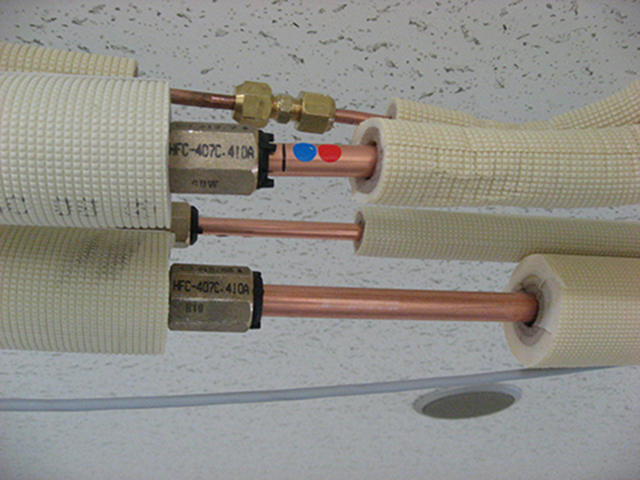
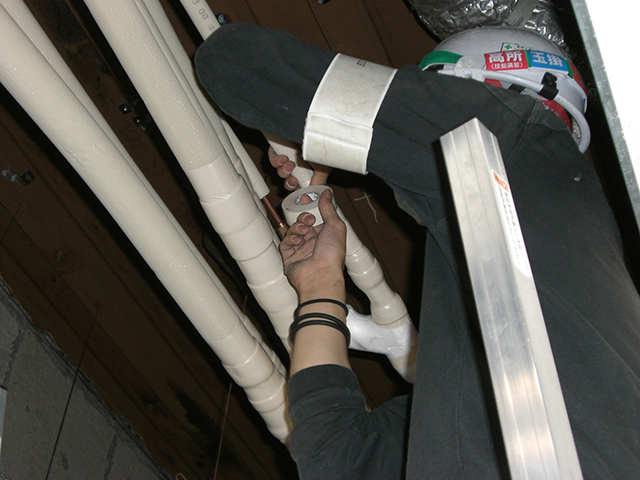
Welding
The process involves inserting a copper pipe into a fitting or an expanded socket created by an expander. The connection is then created by heating the socket using burning acetylene gas and filling the gap with phosphor-copper solder. This work should be carried out by a qualified welder or someone who has completed gas welding training, as mandated by labor safety and health regulations.
Various precautions need to be taken during the process, such as carefully controlling the heating temperature and ensuring that no oxidation film forms inside the pipe by flowing nitrogen gas appropriately. Skilled and experienced professionals are required for this type of work. This method is commonly used for connecting copper pipes to outdoor units or connecting branches inside buildings and has been widely used in many construction sites for a long time.
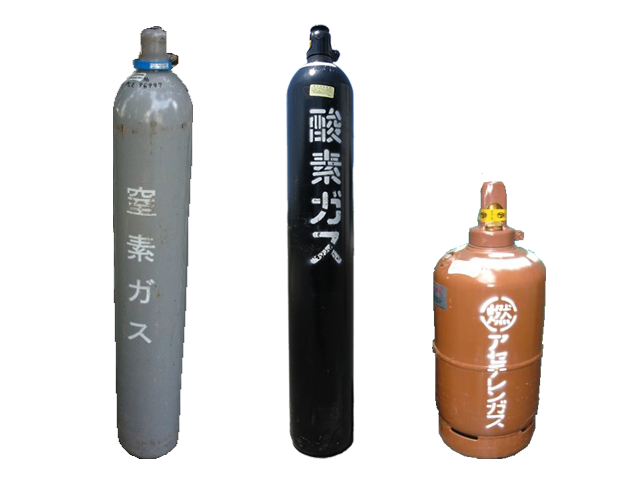
Acetylene Gas
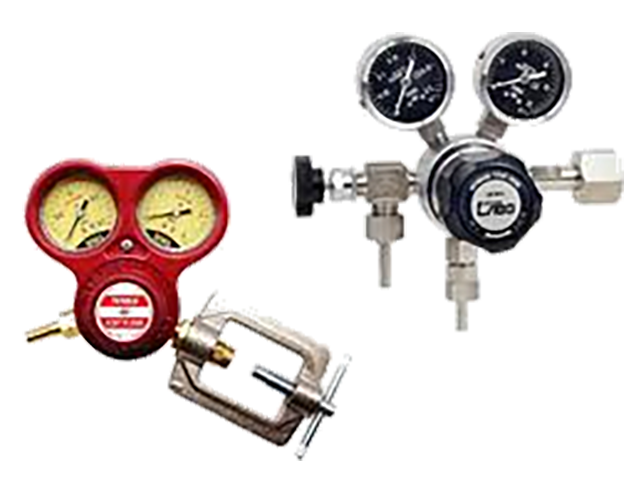
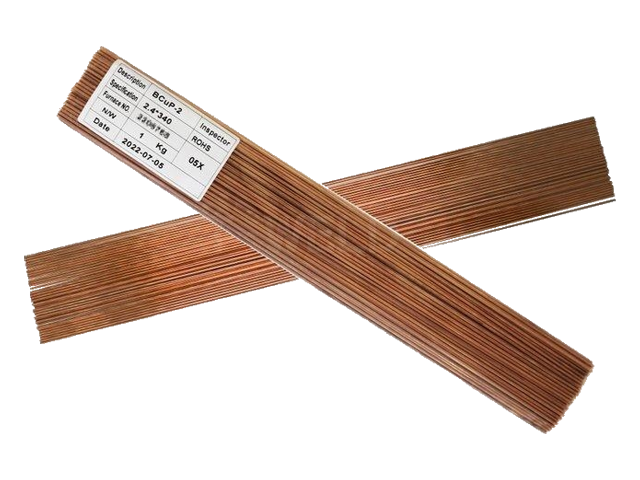
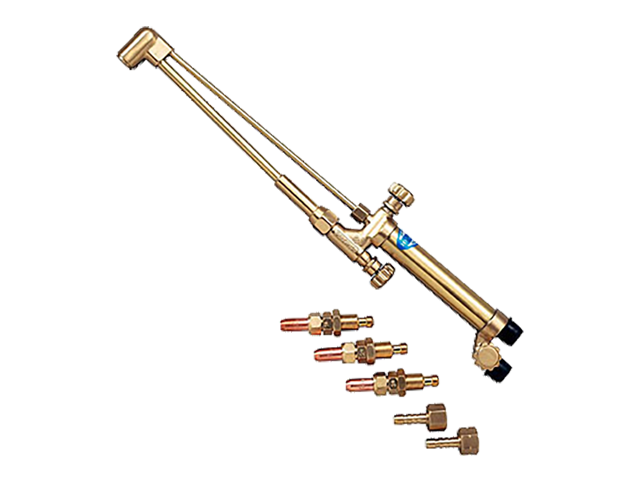
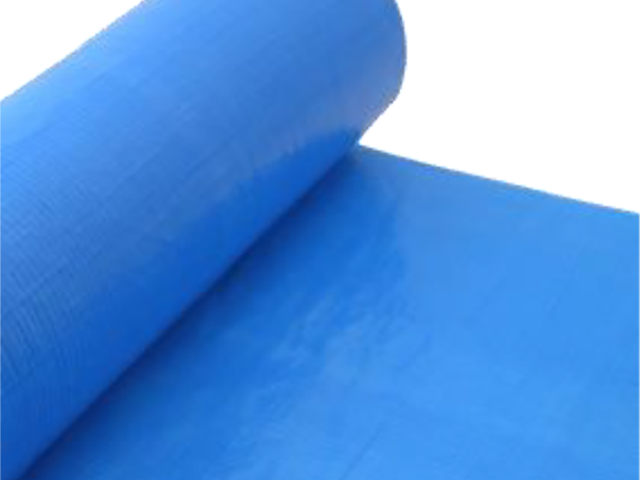
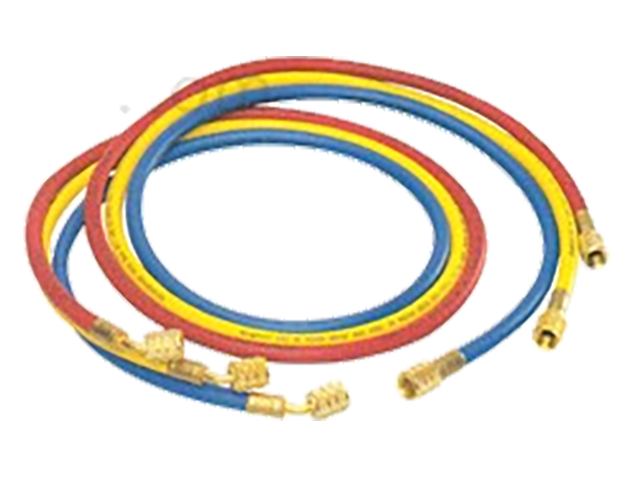
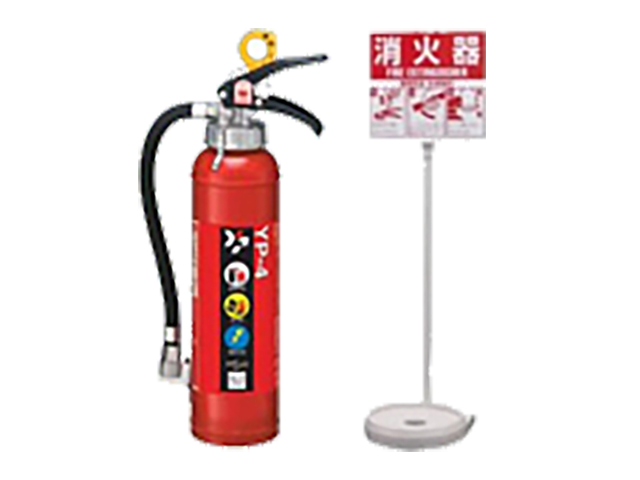
Flare
The process involves inserting a flare nut onto the pipe and then expanding the pipe end using either an electric or manual flaring tool. The flared pipe end is then connected to the equipment's male screw by tightening the nut. The inner surface of the flare and the equipment's connection end form a metal seal. It is essential to tighten the nut with a specified torque.
Insufficient tightening may result in refrigerant leakage, while excessive tightening could lead to damage to the flared portion. Therefore, it is necessary to use a torque wrench to manage the tightening torque of the nuts for each size. Copper pipe sizes ranging from 6.35mm to 15.88mm are commonly used for connecting pipes with various equipment.
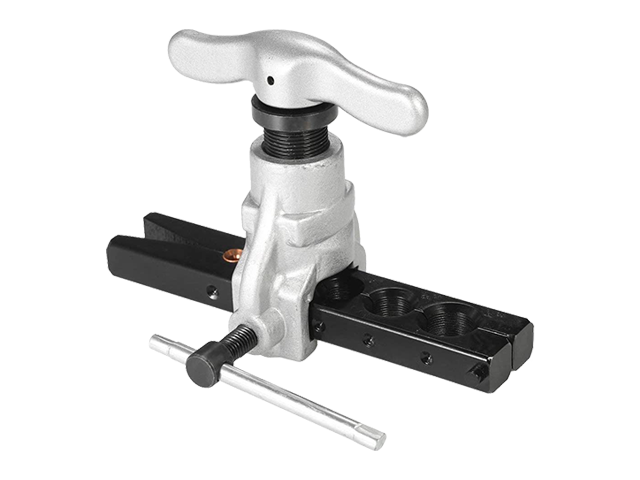
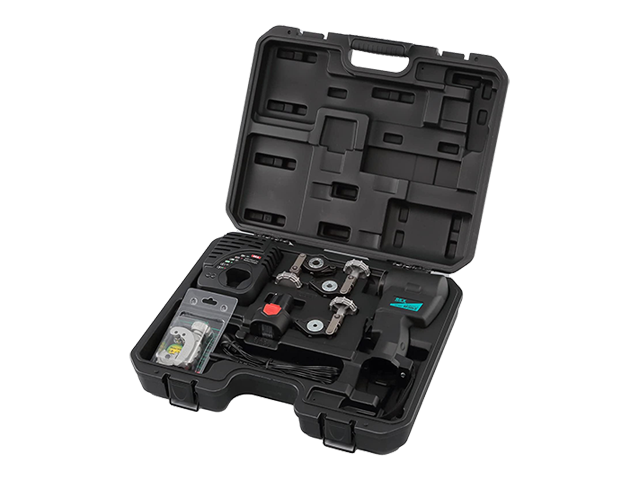
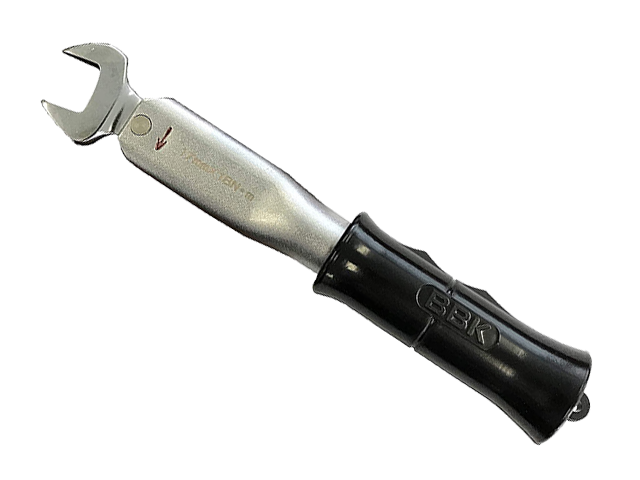
Fire-Free Method (connecting by Mechanical Pipe Fittings)
The fitting has the structure of the mechanical connection due to the built-in sealing material and anti-leak mechanism, which does not require the heating or welding the pipe / fitting but cutting / chamfering the pipe on site. There are four types as follows.
-
Nut Method
The method of connecting pipes by inserting them into pipe fittings and then tightening the nut to secure the connection. By tightening the end nut, the anti-leak components and sealing parts are pressed against the outer circumference of the copper pipe, ensuring fixation and airtightness.
-
Press Method
The method of inserting pipes into fittings and pressing the fitting using special tightening tool.
-
Press-Fit Method
The method of inserting pipes into fittings and press-fitting the component of the fitting using special tightening tool.
-
Inserting Method
The method of connection by inserting the pipe into the fitting.
Nut Method
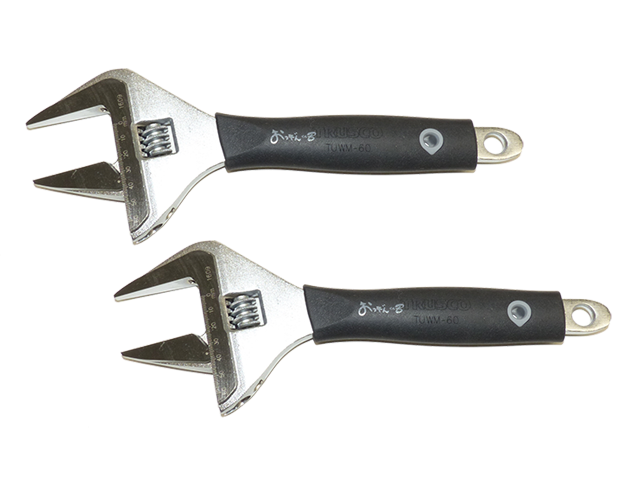
Press Method
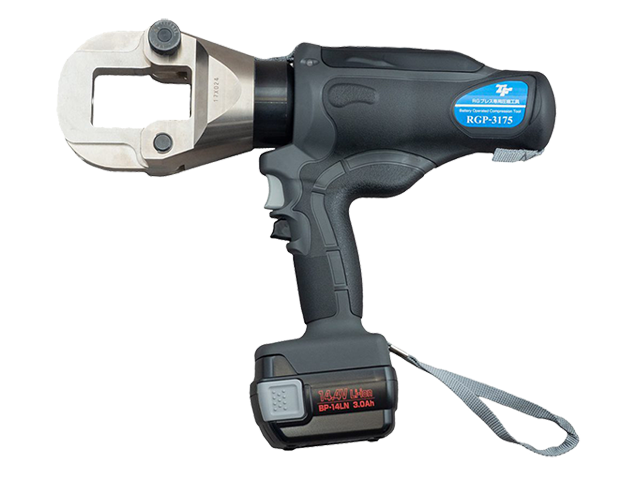
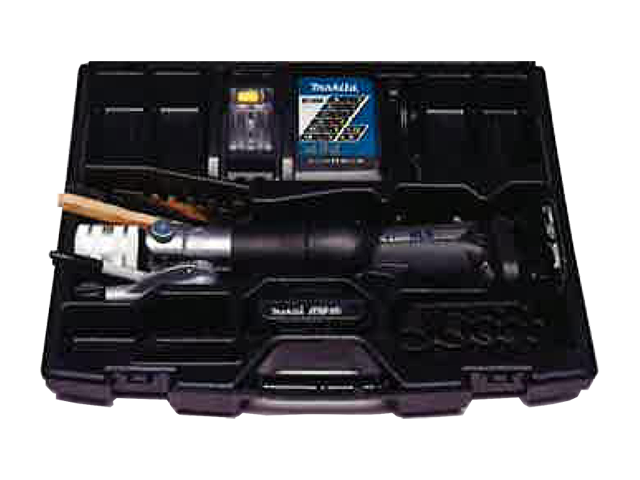
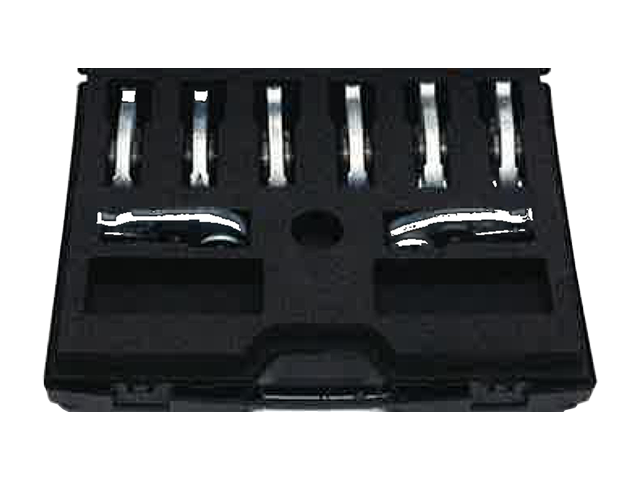
Precautions for the traditional and common method.
■ Failure to adequately replace nitrogen can lead to contamination and pose a risk of equipment malfunction, which may result in bearing the cost of equipment replacement until an update is made.
If a malfunction occurs during the warranty period, the equipment manufacturer or construction company will bear the cost, but after the warranty period, the client will be responsible for the maintenance expenses if any issues arise.
■ In flare connections, there is a risk of leakage from insufficient deburring of the flare surface and nut tightening requires torque management with a torque wrench. Insufficient tightening may cause refrigerant leakage, while over-tightening poses a risk of damaging or detaching the flare due to reduction in thickness.
Reasons for the Transition of Refrigerants
Refrigerants used have evolved from old refrigerants (CFC) to alternative refrigerants (HCFC) and then to new refrigerants (HFC), and air conditioning equipment manufacturers have released energy-efficient new models compatible with the new refrigerants. Due to the refrigerant transition, the maximum operating pressure increases to 4.3 MPa, but with improved efficiency, there is also the benefit of being able to use piping one size smaller than the old piping.
The transition of refrigerants is driven by two environmental issues. The issue of ozone depletion has been addressed by HFCs, achieving zero ozone depletion potential (ODP). However, the global warming potential (GWP) has not yet been eliminated. Even the latest refrigerant R32 has a GWP of 675, which is one-third of other new refrigerants, but the urgency to stop global warming remains.
With the amendment of the Fluorocarbon Emission Control Law, equipment managers are legally responsible for refrigerant management during air conditioning equipment use, removal due to equipment lifespan, refrigerant recovery, and proper disposal of fluorocarbon gas.
It is crucial for refrigerant piping to be absolutely leak-free during installation and use.
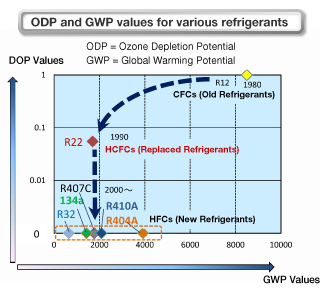
The popularization / adoption of fireless joints
When implementing equipment replacement work with welding, there is a fire risk to consider. The process of removing flammable materials and implementing fire protection measures requires effort. For those who want to minimize these losses and do the work without requiring special skills or experience, our company introduced "O'zzone Boy" in 2003.
Since its introduction, O'zzone Boy has evolved significantly in two stages, improving its performance while maintaining ease of installation and offering the more affordable "Reiwa O'zzone" in 2021. In 2018, the JCDA0012 performance standard for this category was established, and both O'zzone Boy and Reiwa O'zzone obtained JCDA performance certification in 2019 and 2021, respectively.
Through such improvements and a track record of safety and security, we have gained the support of repeat customers, making "O'zzone Boy" a trusted brand for fire-free installations. Additionally, we have developed and launched the "Aluminum O'zzone Boy," which is designed for use with aluminum pipes, as there has been a trend towards using aluminum pipes for refrigerant piping due to the rise in copper prices.
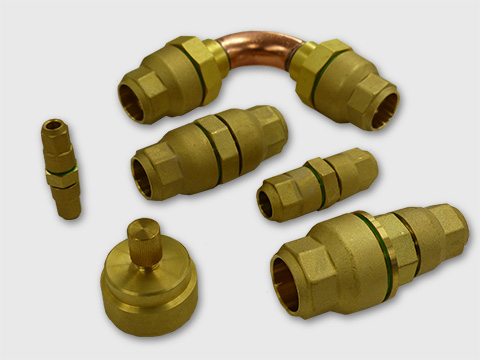
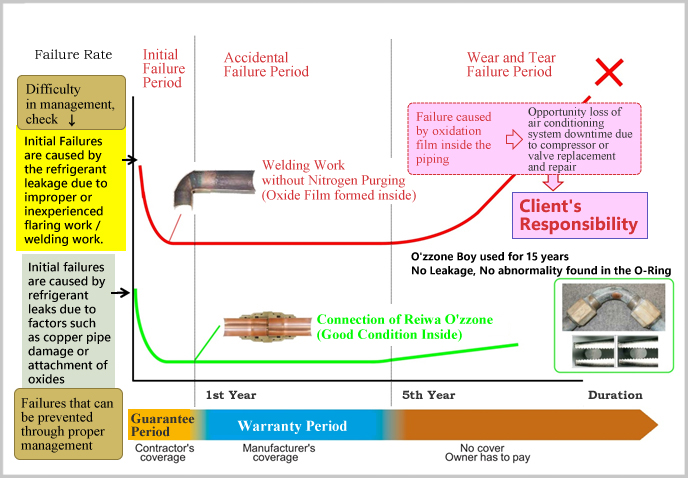
Installation Work by Reiwa O'zzone
- ① Fire-free construction: It reduces the risk of fire and equipment failure. Skilled personnel are not required.
- ② Construction quality: There is minimal variation in the quality of work among workers, and completion can be easily checked visually by anyone.
- ③ Material and labor total cost: It is at the same level as welding.
- ④ Reduced burden of working at heights: The number of nut tightening rotations is minimal, and no special tools are required.
- ⑤ Long-term stable quality: The risk of performance changes and failures due to aging is also minimized.
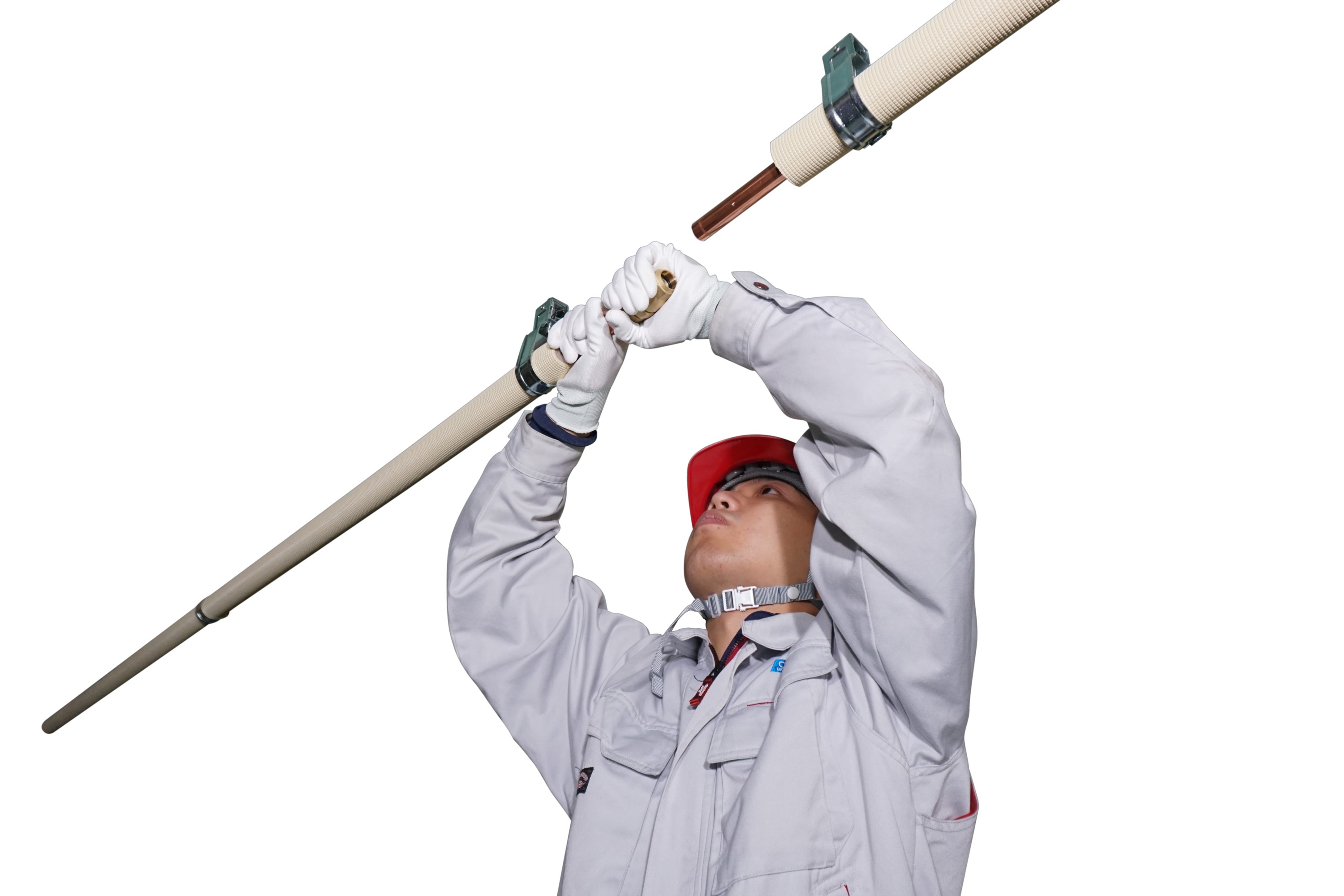
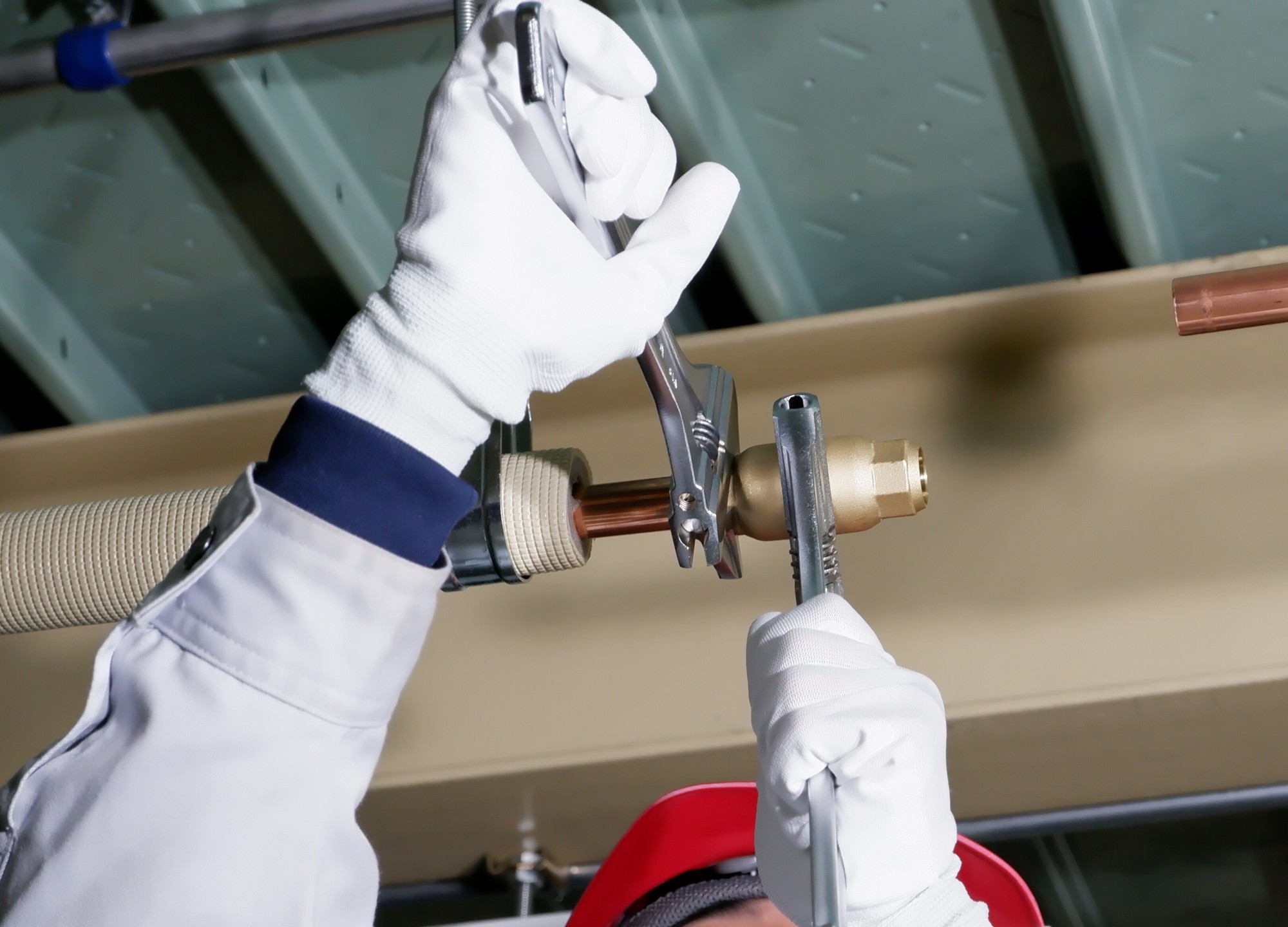
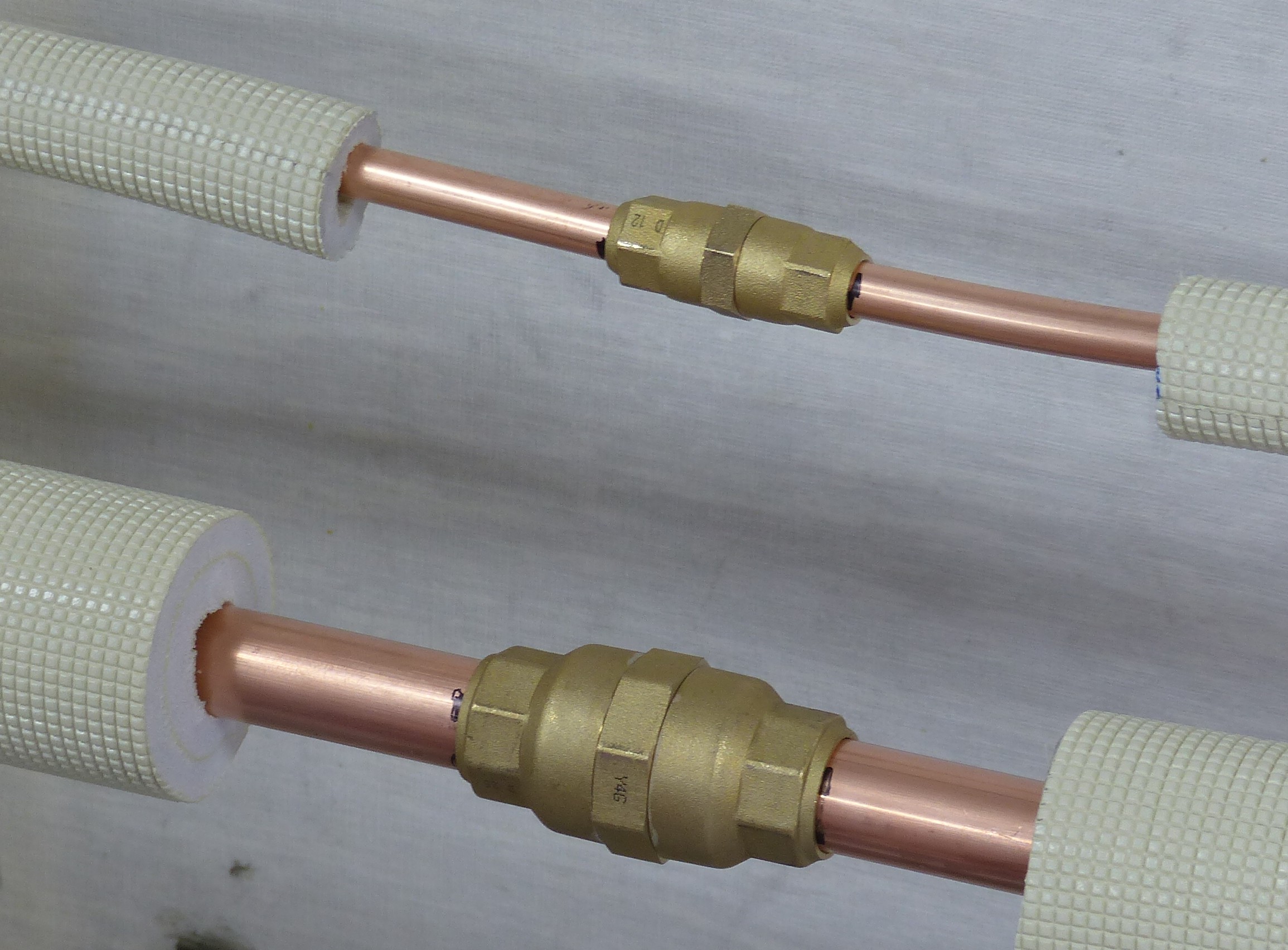
About the nut tightening wrench for "Reiwa O'zzone"
For the nut tightening of "Reiwa O'zzone," please select the wrench with an opening width B based on the following W1, W2, and W3 two-sided dimensions:
For copper pipe size 38.1mm, the nut two-sided dimension is 54.7mm, so you will need a wrench with an opening width of 55mm or more. The tightening torque for the 38.1mm nut is approximately 70 to 80 N·m. If the handle of the wrench is short, you can use a pipe or tube as an extension.
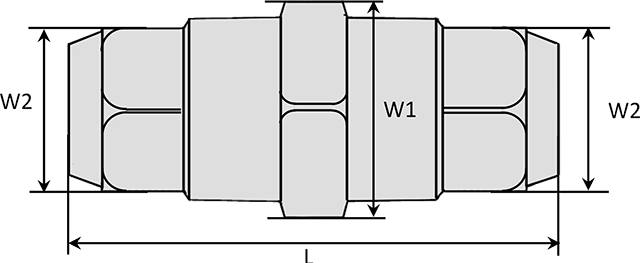
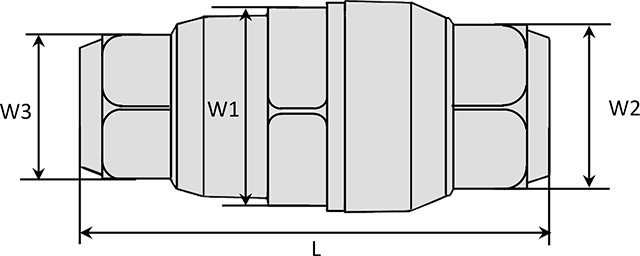
| Size (φ) | Length (L) | Body two-side dimension (W1) | Nut two-side dimension (W2) | Nut two-side dimension (W3) |
|---|---|---|---|---|
| 6.35 | 50.4 | 15.0 | 11.7 | - |
| 9.52 | 55.0 | 19.9 | 15.7 | - |
| 12.7 | 59.0 | 23.5 | 19.9 | - |
| 15.88 | 74.0 | 30.0 | 23.4 | - |
| 19.05 | 76.8 | 34.6 | 26.8 | - |
| 22.22 | 83.4 | 40.2 | 29.8 | - |
| 25.4 | 85.4 | 43.5 | 33.0 | - |
| 28.58 | 88.0 | 46.8 | 36.5 | - |
| 31.75 | 98.4 | 47.1 | 48.4 | - |
| 38.1 | 102.4 | 53.7 | 54.7 | - |
| 9.52 x 6.35 | 52.7 | 19.9 | 15.7 | 11.7 |
| 12.7 x 9.52 | 57.5 | 23.5 | 19.9 | 15.7 |
| 15.88 x 12.7 | 65.0 | 30.0 | 23.4 | 19.9 |
| 19.05 x 15.88 | 76.8 | 30.0 | 26.8 | 23.4 |
| 22.22 x 19.05 | 81.5 | 40.2 | 29.8 | 26.8 |
| 25.4 x 22.22 | 85.8 | 43.5 | 33.0 | 29.8 |
| 28.58 x 25.4 | 88.1 | 46.8 | 36.5 | 33.0 |
| 31.75 x 28.58 | 93.5 | 47.1 | 48.4 | 36.5 |
| 38.1 x 31.75 | 100.7 | 53.7 | 54.7 | 48.4 |
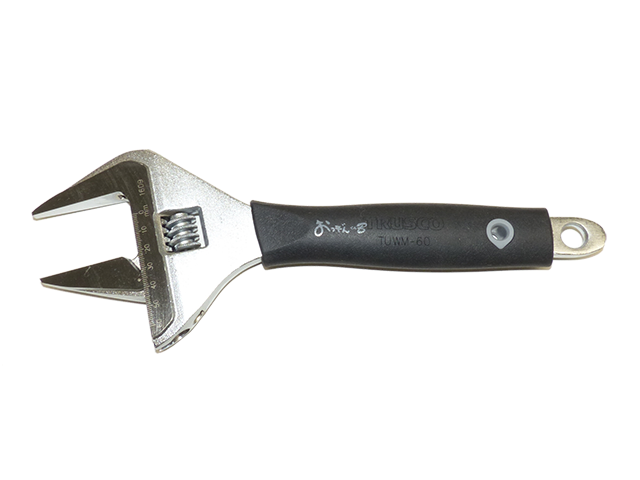
TUWM-60
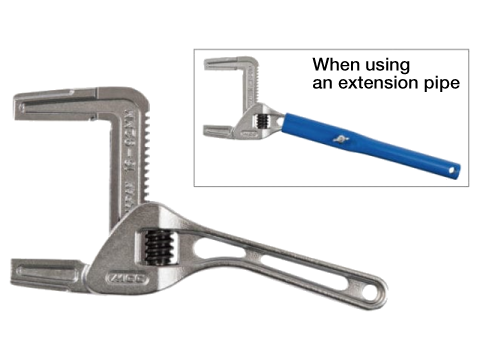
MWW-92
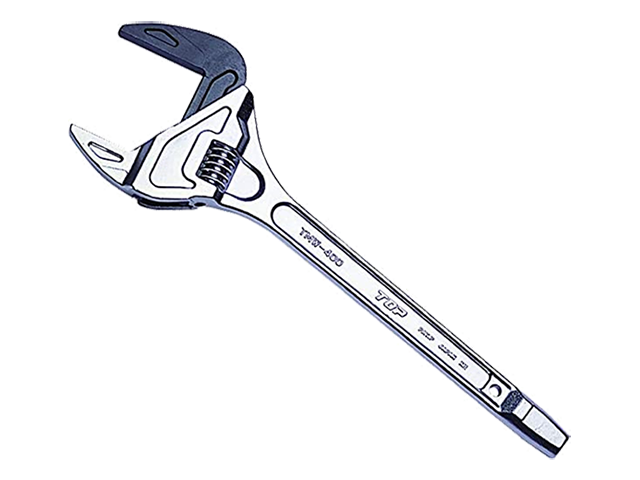
TMW-400
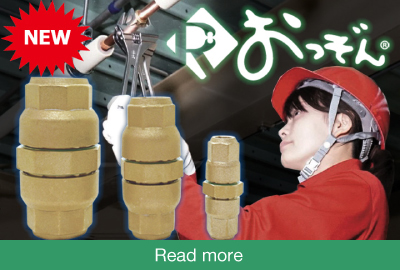
PRODUCT INFORMATION
- Reiwa O'zzone
- KK Best
- Soroban Fitting
- Picappo
- MECHFit/Toglit
TECHNOLOGY
- MANUFACTURING TECHNOLOGY CAPABILITY
- PATENT INTRODUCTION
COMPANY INFORMATION
- COMPANY PROFILE
- GREETING
- COMPANY PHILOSOPHY
- BUSINESS REPORT
- CORPORATE HISTORY
- Company Introduction Video
TYPE OF PIPING
- What is AC Piping?
- What is Sanitary Piping?
- What is Fire Extinguishing Piping?
- What is Gas Piping?



